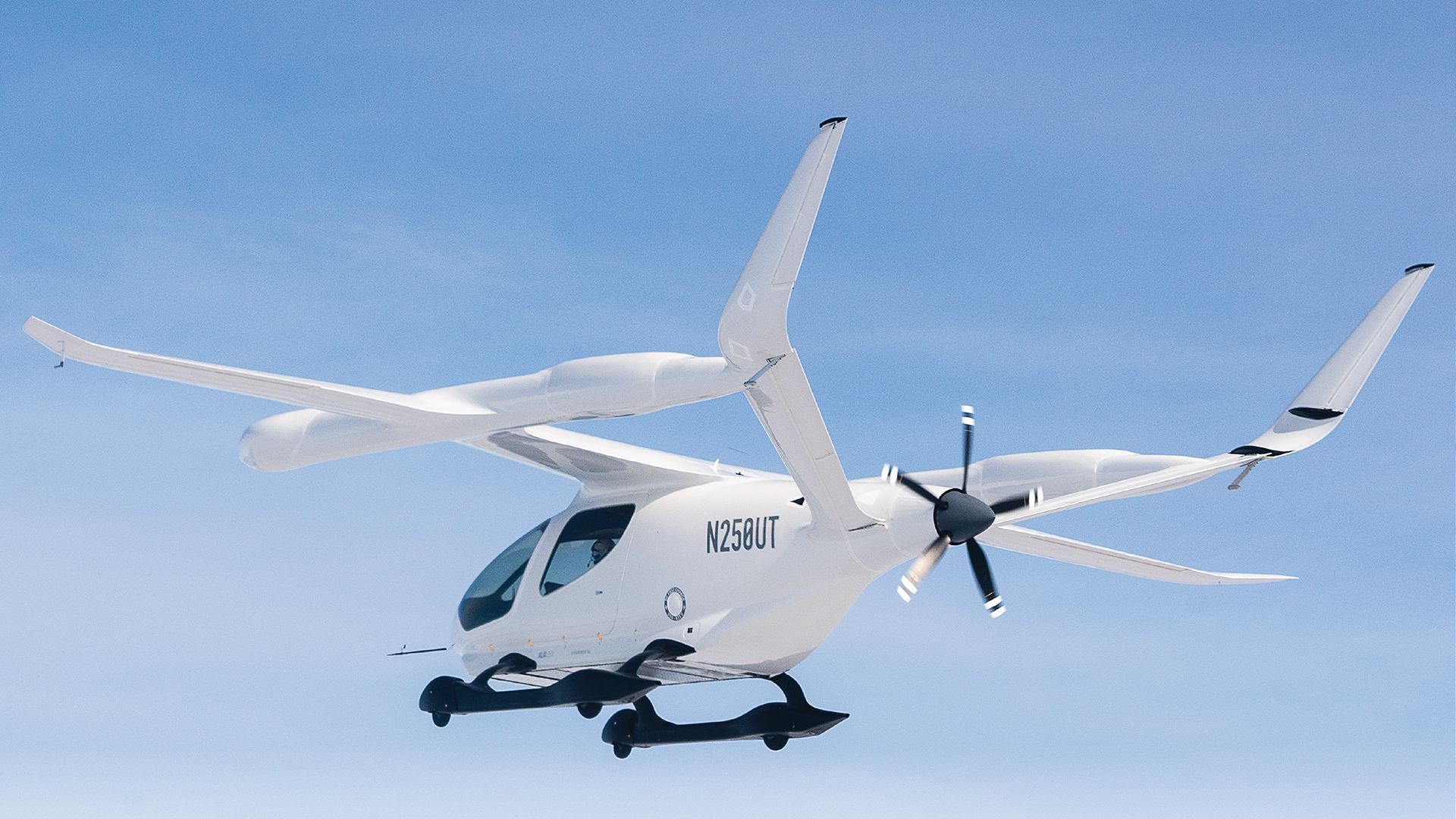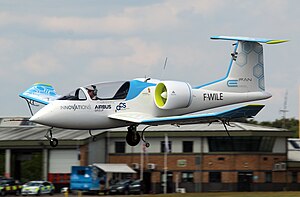Leeham News and Analysis
There's more to real news than a news release.
Bjorn’s Corner: Air Transport’s route to 2050. Part 10.
February 21, 2025, ©. Leeham News: We do a Corner series about the state of developments to replace or improve hydrocarbon propulsion concepts for Air Transport. We try to understand why the development has been slow.
Last week, we reviewed the present fallout of lower emission projects that have not reached their goals and where investors, therefore, have decided not to invest further.
There is a well-known project failing every month at the present pace. Some recent ones: Universal Hydrogen’s ATR conversions, Volocopter and Lilium’s bankruptcies, Airbus freezing the CityAirbus eVTOL (Figure 1) and pushing out the ZEROe hydrogen airliner, hibernation of the Alice battery aircraft, etc. There will probably be more in the coming months.
Airbus 2024 results: “A decent year in a challenging environment”.
By Bjorn Fehrm
February 20, 2025, © Leeham News in Toulouse: The headline uses the words of Airbus CEO Guillame Faury when he opened the presentation of Airbus 2024 results in Toulouse today. It was a session where Faury and the CFO Thomas Toepfer put in an effort to let all present international journalists and their online colleagues ask all questions and deliver honest answers.
On the business-as-usual side, the company delivered 766 aircraft, which was within the guidance, after a deep grab effort in 4Q, leading to low deliveries for 1Q2025. EBIT at €5.4bn and Free Cash Flow at €4.5bn were also within guidance.
In general, the Commercial airplane side was fighting specific supply problems during 2024, which might limit the ramp-up of A350s and A220s going forward, more of which below. Helicopters have now recovered from challenging times and delivered a solid result. Defense and Space are strong in Air Power (fighters, etc.), given the tense European situation, with Space going through restructuring, which might include mergers with other European space players.
The real news was the reasons for pausing the CityAirbus eVTOL program, according to Faury, “not only because batteries were not where they should have been but also due to the lack of a market for this type of transportation.” As the world’s largest supplier of helicopters, Airbus is a credible source for such a lack of market statement.
Faury also detailed what is happening on the Hydrogen side. Due to slower-than-expected progress in Green Hydrogen production build-up, deployment of preparatory Ground Support Equipment (GSE), and Transportation using hydrogen at the airports in their H2 partner network, Airbus has decided to push out the entry into service of a “commercially viable hydrogen aircraft” by five to ten years.
However, said Faury, it has made progress. “We have reached TRL 3 for the tecnobricks, which has enabled us to select the Fuel Cell path as the preferred way forward. This means these activities are continued at the present level or even intensified, but it also means other paths (read Hydrogen burn) are ramped down. Overall, it means a decrease in R&D spending for Hydrogen activities in the coming years.”
Read more
Bjorn’s Corner: Air Transport’s route to 2050. Part 8
February 7, 2025, ©. Leeham News: We do a Corner series about the state of developments to replace or improve hydrocarbon propulsion concepts for Air Transport. We try to understand why the development has been slow.
We have covered the progress of battery-based aircraft and hybrids, where the last Corner was about the most sensible hybrids, the mild hybrids. Now, we turn to hydrogen-fueled alternatives.
Bjorn’s Corner: Air Transport’s route to 2050. Part 7.
January 31, 2025, ©. Leeham News: We do a Corner series about the state of developments to replace or improve hydrocarbon propulsion concepts for Air Transport. We try to understand why the development has been slow.
We have covered the progress of battery-based aircraft and hybrids, both serial and parallel hybrids. A couple of mild hybrids have a larger chance of success than the ones we described. We will look into these and then start looking at different hydrogen-fueled alternatives.
Bjorn’s Corner: Air Transport’s route to 2050. Part 6.
January 24, 2025, ©. Leeham News: We do a Corner series about the state of developments to replace or improve hydrocarbon propulsion concepts for Air Transport. We try to understand why the development has been slow.
We have covered why the progress of battery-based aircraft is slow and also described what to expect at the end of this decade and the beginning of next.
Now, we look at hybrids, an inherently more complex design. Upstarts are changing to hybrids after realizing that battery-only aircraft will not have useful range this side of 2030.
Read more
Bjorn’s Corner: Air Transport’s route to 2050. Part 5.
January 17, 2025, ©. Leeham News: We do a Corner series about the state of developments to replace or improve hydrocarbon propulsion concepts for Air Transport. We try to understand why the development has been slow.
We have covered why the technical progress of battery-based aircraft has been slow. Now we look at what type of missions it can do this decade and beyond and why the limitations.
Figure 1. The Diamond eDA40 electric trainer. Source: Diamond. Read more
Bjorn’s Corner: Air Transport’s route to 2050. Part 4.
January 10, 2025, ©. Leeham News: We do a Corner series about the state of developments to replace or improve hydrocarbon propulsion concepts for Air Transport. We try to understand why the development has been slow.
We listed the different projects in the second Corner of the series that have come as far as flying a functional model or prototype. In Part 3, we went through some of the causes of the slow growth. It was a mix of inexperienced startup managments, all wanting to be the new Elon Musk but lacking elementary knowledge in the aeronautical field, to what is the real hard part of an alternative propulsion concept.
Many startups developed new electric motors for eAirplane or eVTOL use, a relatively straightforward development when the real hard part is the batteries. We described how batteries differ significantly from fuel as an energy source in Part 3.
Now, we add a market aspect that is poorly understood by most players.
Bjorn’s Corner: Air Transport’s route to 2050. Part 3
November 1, 2024, ©. Leeham News: We do a Corner series about the state of developments to replace or improve hydrocarbon propulsion concepts for Air Transport. We will find that development has been very slow.
Last week, we listed the different projects that have come as far as flying a functional model or prototype, as we need this filter to reduce the hundreds of projects that have declared they want to develop such an aircraft type. We can see that we have only a certified two-seat trainer, and one project has a prototype that has started certification, the CX300 six-seater in Figure 1.
Why is the progress so slow?
Bjorn’s Corner: Air Transport’s route to 2050. Part 2.
October 24, 2024, ©. Leeham News: We do a Corner series about the state of developments to replace or improve hydrocarbon propulsion concepts for Air Transport. We will find that development has been very slow.
We don’t have, and will not have, a certified and produced aircraft that can transport passengers using anything but classical propulsion concepts this side of 2028 and probably 2030 if we put the bar above five passengers.
This is 14 years after the flight of the Airbus E-Fan in 2014, which started a multitude of studies and projects to explore new, more environmentally friendly ways to propel aircraft.
Why is the progress so slow? Normal aircraft development takes seven to a maximum of nine years?
Heart Aerospace’s revised ES-30, Part 3. UPDATED
Subscription required
By Bjorn Fehrm
October 24, 2024, © Leeham News: We analyze Heart Aerospace’s latest evolution of the hybrid ES-30. The latest version, presented in spring 2024, is a parallel hybrid, putting gas turbine turboprop engines outside the electric motor engines.
After examining what such a parallel hybrid system means for aircraft dimensions and masses, we now fly the aircraft on a typical US short-haul route through our Aircraft Performance and Cost Model (APCM) to assess its operational performance.
Does the ES-30 make operational sense for an airline that needs a short-haul feeder?
Summary:
- The parallel hybrid architecture gives the ES-30 certain operational flexibility to fly routes over 100nm, making it possible to replace present 30 seaters on such short routes.
- However, the operational costs are considerably higher than today’s 30-seaters. As always, the problem is the battery costs.
- UPDATE: Heart Aerospace contacted us after the article was published. The article has been complemented with their information.










